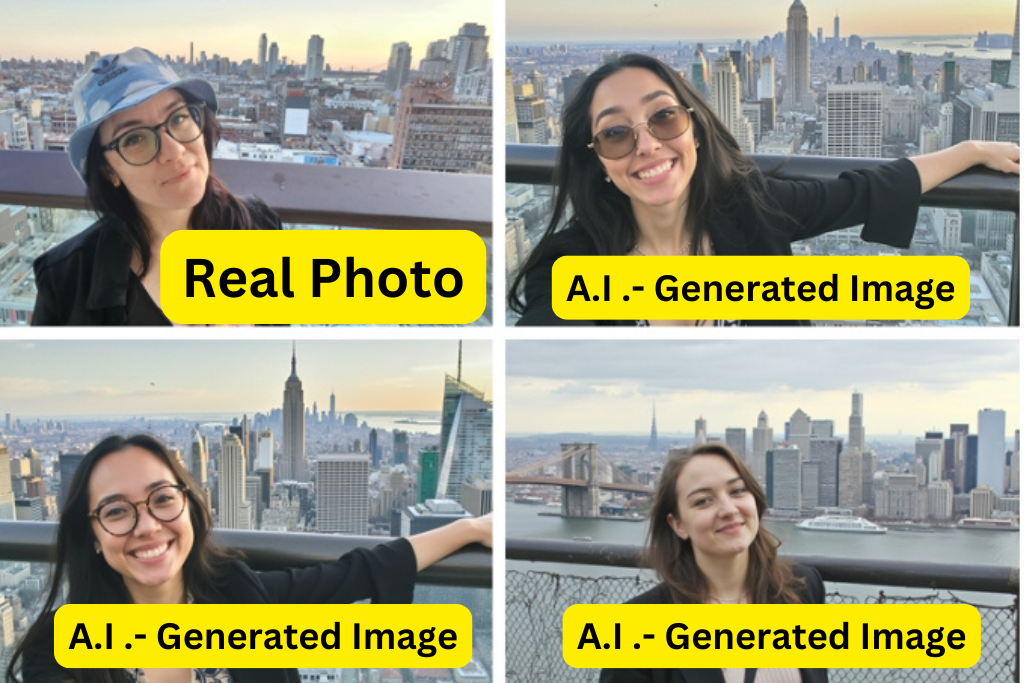The introduction of AI tools, such as Flux, is reshaping the landscape of image creation, offering unprecedented capabilities in generating hyperrealistic visuals. These advancements are transforming how we perceive images, raising both excitement and ethical concerns. Here’s a deeper look at the impact and implications of these emerging AI technologies.
1. Flux: A Powerful AI Image Generator
Flux is a free AI image generator released in August that is gaining attention for its ability to create highly realistic images with remarkable speed and precision. Unlike many previous AI tools, Flux excels in avoiding common pitfalls such as unnaturally smooth skin or distorted features.
- Key Points:
- High-Quality Creations: Flux can generate convincing images that closely resemble real photographs, making it difficult to distinguish between AI-generated content and actual photos.
- Accessible and Flexible: The tool is available offline, providing users with the ability to create and modify images without needing a constant internet connection.
2. AI Image Creation: The Process
AI image creation relies on vast databases of reference images to generate new visuals. This process involves drawing on real photos to add specificity and accuracy, enabling the creation of hyperrealistic images of people, animals, landscapes, and more.
- Key Points:
- Realistic References: The use of real photos as references helps ensure that the AI-generated images are as lifelike as possible.
- Versatility: AI tools can create images across various subjects, from portraits to nature scenes, enhancing creative possibilities.
3. Challenges of AI-Generated Images
As AI-generated images become more realistic, it becomes increasingly difficult to differentiate them from genuine photographs. This presents a challenge in discerning authenticity and accuracy.
- Key Points:
- Telltale Signs: Misplaced background elements, slight inconsistencies, or unnatural lighting can be indicators of AI-generated content.
- Verification: Careful analysis and verification of image sources are essential to prevent the spread of misinformation or manipulated visuals.
4. Grok 2: Another AI Image Generator
Grok 2 is another AI tool designed for creating images, available to Premium users on X (formerly Twitter). Like Flux, Grok 2 allows for image generation with minimal restrictions, making it a valuable tool for creative professionals.
- Key Points:
- Shared Technology: Grok 2 shares underlying technology with Flux, offering similar capabilities in generating high-quality visuals.
- Premium Access: Available to premium users, Grok 2 caters to those seeking advanced image creation tools.
5. Ethical Concerns in AI Image Creation
The accessibility and flexibility of AI tools like Flux and Grok 2 raise ethical concerns, particularly regarding misuse. These tools make it easier to create deceptive content or violate copyrights, leading to potential legal and moral dilemmas.
- Key Points:
- Guardrails: Implementing ethical guardrails in AI tools is crucial to prevent misuse and ensure responsible use of these technologies.
- Competitive Pressures: In a competitive market, the push for innovation may lead to fewer restrictions, increasing the risk of unethical practices.
6. Expert Opinion: Risks of Open-Source AI Tools
Experts caution against the risks associated with open-source, client-side AI tools that can be modified for purposes that violate terms of service or ethical standards. Such modifications could lead to serious consequences, including the proliferation of deceptive or harmful content.
- Key Points:
- Modifications: Altering AI tools can result in misuse, making it essential to uphold ethical standards in AI development.
- Maintaining Integrity: Ensuring that AI tools are used responsibly is vital to safeguarding against misuse and maintaining public trust.
7. The Future of AI in Image and Video Creation
As AI technology continues to advance, companies are planning to release even more sophisticated generative tools, including those capable of creating video content. Black Forest Labs, for instance, is working on video-generative tools that could further revolutionize the digital content landscape.
- Key Points:
- Advanced Tools: Future AI tools are expected to expand beyond static images, enabling users to generate dynamic video content with the same level of realism.
- Media Literacy: As AI-generated content becomes more prevalent, consumers will need to apply media literacy skills to evaluate and discern the authenticity of digital content.
Conclusion
AI tools like Flux are driving a new era of creativity and innovation in image creation. However, with these advancements come challenges and ethical concerns that must be addressed. The future of AI in content generation holds great potential, but it also demands careful consideration of the risks involved. As technology evolves, maintaining a balance between innovation and responsibility will be key to ensuring a positive impact on society.

